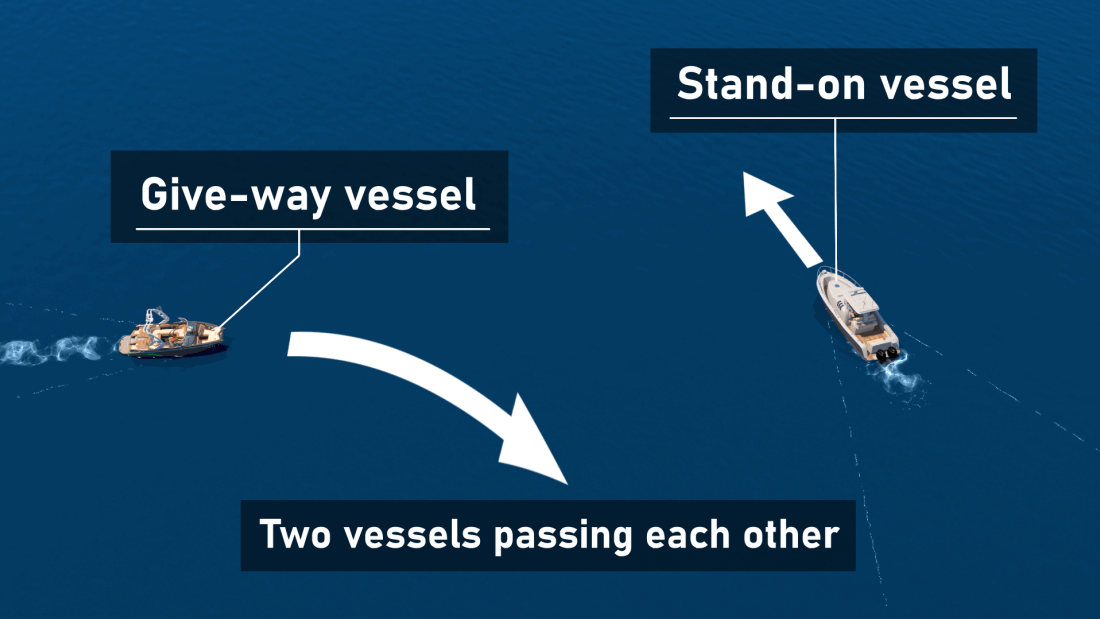Meeting situations - Collision regulations Head-on - Overtaking - Crossing
What do you do when approaching a power-driven vessel head-on?
When two power-driven vessels are approaching head-on or nearly so, either vessel shall indicate its intent which the other vessel shall answer promptly. In this meeting situation, neither vessel is the stand-on vessel.
It is generally accepted that you should alter course to starboard and pass port-to-port.
What does passing port-to-port mean?
When two power-driven vessels are approaching head-on, both vessels should alter course to starboard to pass port-side to port-side.
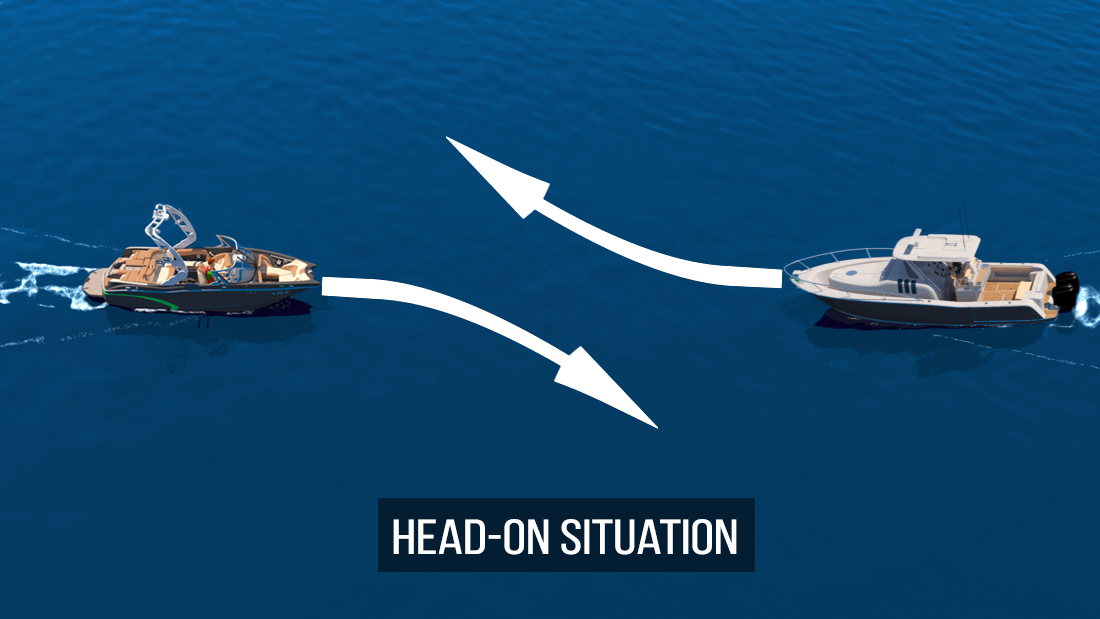
How many blasts does it take to alter a course to starboard?
When alter course to starboard and pass port-to-port, the accompanying sound signal is one short blast.
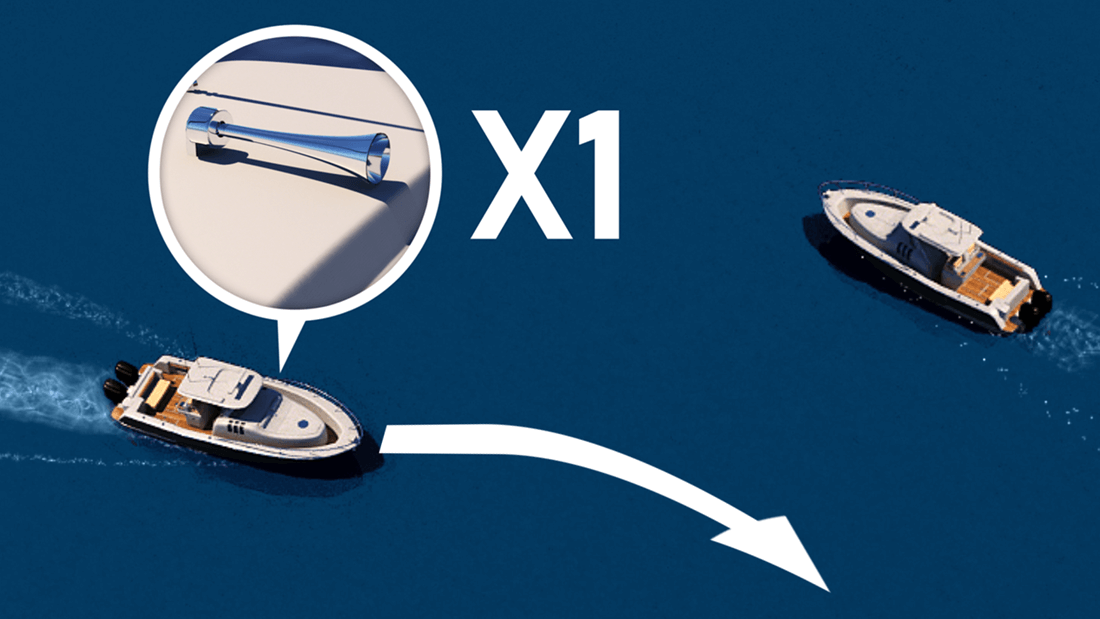
What happens if two boats are approaching each other head-on and you can't pass port-to-port?
If you cannot pass to starboard (port-to-port) due to an obstruction or other vessels, you should sound two short blasts to indicate your intention to pass to port (starboard-to-starboard).
Make sure the other vessel understands your intent before proceeding. The other vessel should return your two-short-blast signal.
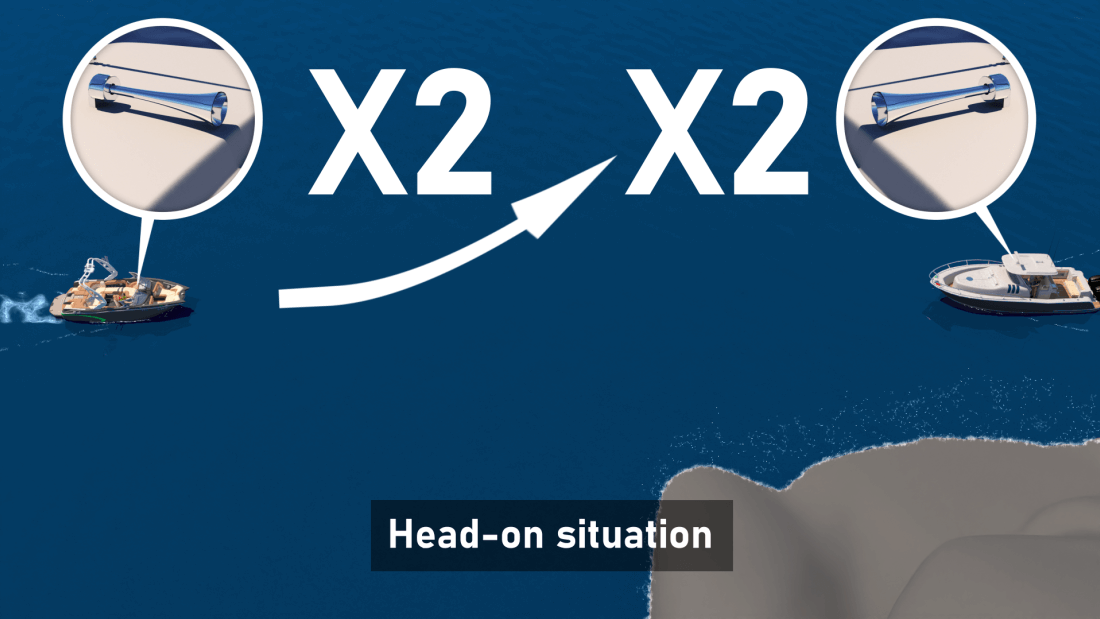
What must you do if you wish to overtake another vessel?
When two vessels are moving in the same direction, the vessel passing is the give-way vessel and should keep out of the way of the vessel being passed. The vessel being passed is the stand-on vessel and must maintain its course and speed. If the stand-on vessel realizes that the course intended by the give-way vessel is not safe, it should sound the danger or doubt signal.
At night you would only be able to see the stern light of the vessel being overtaken. You would not be able to see either sidelight.
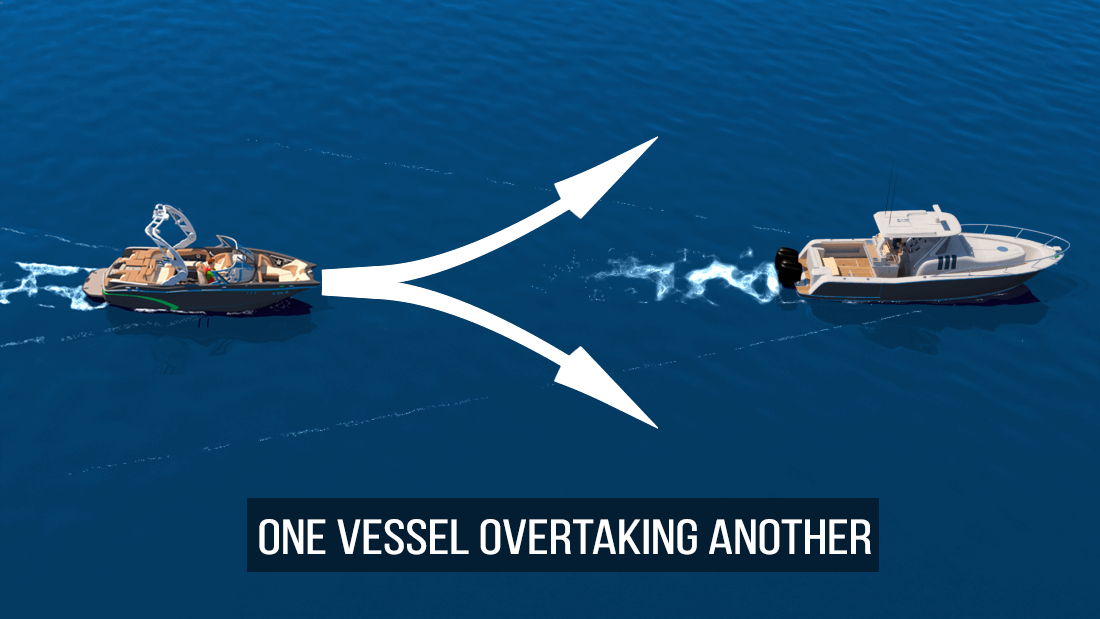
How many blasts does it take when overtaking another vessel?
If you are overtaking a vessel, remember that you are the give-way vessel until well past, and safely clear of, the passed vessel. Do not cut in front of, impede or endanger another vessel.
Boat behind: "I intend to pass you on your starboard side" - 1 short blast (1 sec.)
Boat in front "Agreement" - 1 short blast (1 sec.)

Boat behind: "I intend to pass you on your port side" - 2 short blasts
Boat in front: "Agreement" - 2 short blasts
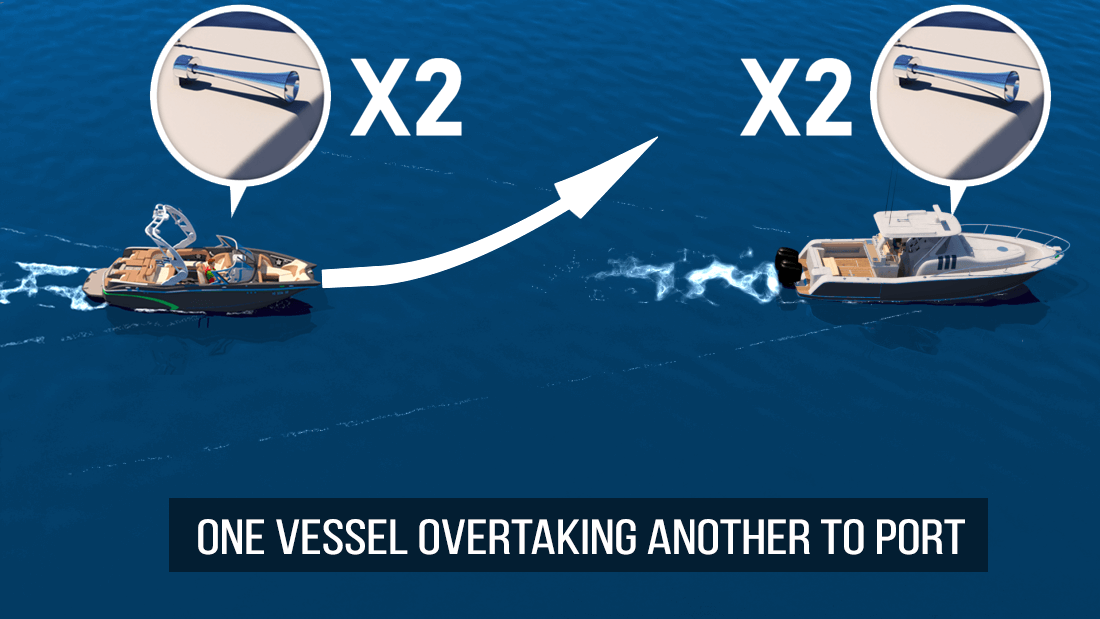
What should you do if operating a motorboat that is being overtaken by a sailboat?
Regardless of whether it is a sailing vessel or a power-driven vessel, the stand-on vessel is always the one being overtaken.

As the operator of a power-driven vessel, what should you do if you meet another power-driven vessel?
When two power driven boats are approaching at right angles or nearly so, and risk of collision exists, the boat on the right is the stand-on vessel, has the right of way and must hold its course and speed. The other boat, the give-way vessel, shall maneuver to keep clear of the stand-on vessel and shall pass it by its stern. If necessary, slow, stop or reverse until the stand-on vessel is clear.
